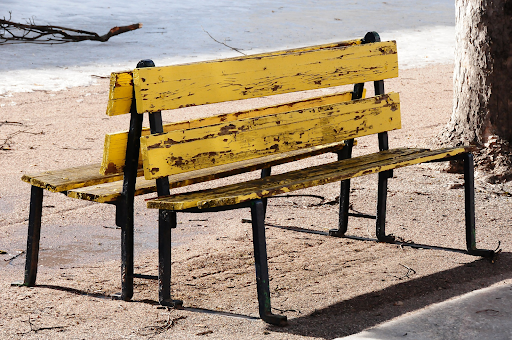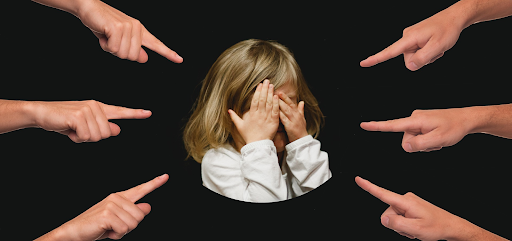July 23, 2019
A Child is in Wilderness Therapy, What Do Parents Do

It is easy to feel blindsided when a tight-knit family suddenly sees a child turn from outgoing, happy, engaged and sweet to one that is removed, sullen, depressed or even partaking in substance abuse. There is a natural tendency to blame, hide, ignore or become removed and depressed as well. Parents can suddenly question how their child, once “normal” got to the point of needing such a high degree of emotional and behavioral support.
Society is mostly unaware, uneducated and unevolved when it comes to matters of mental health and parents of a child who is seen as “out of control” are often reflexively villainized for their “bad parenting skills”. However, it’s important to recognize that blaming a parent for their child’s emotional and behavioral health is about as tuned in as blaming them for their child’s cancer diagnosis. The human mind is an entity all its own and, true it does often become susceptible to outside influences, the core of the mind is singular to itself and will develop how it will.
Residential treatment programs, Wilderness Therapy programs, in-patient treatment centers and the stories of how children end up in them are not uncommon, they are just unspoken. Due to the lack of knowledge and the stigmas behind mental health parents may not feel free to reach out and ask for advice, help and simple understanding. Shame can override these impulses and the child never receives the right kind of attention and the family can easily be torn apart.
Parents need to be able to speak the truth about their child to family, friends, co-workers and even bosses. Instead of hiding or making endless excuses for fear of judgment, a parent needs to be able to say; “My child is working on getting on top of their depression, their disconnection from the world or their substance abuse.” And, on top of that, they need to be able to say “And I’m working on it with them.”
Wilderness Therapy
When parents see significant emotional and behavioral changes in a child and they have exhausted all regular avenues of therapy, Wilderness Therapy has proven very effective. A wilderness therapist, with constant monitoring of a patient, can often accomplish more towards the patient's recovery than a regular therapist can with weekly in-office sessions. When the changes in a child are extreme, this is the kind of situation that is often most effective for recovery.
The Parent’s Role
Don’t be mistaken, when it comes to wilderness therapy, it’s not a matter of dropping a child off and having them delivered back later fully healed and back to “normal”. The child will have a lot of work to do but the parents will as well. It’s very important to remember:
A CHILD DOES NOT GET BETTER IN A VACUUM.

A family is a system and in order to heal it’s not just the child that needs to work and grow, it’s each member of the family. And for the wilderness therapy process to be at it’s most effective, parents must take an active role.
It starts with the initial phone call that gets the child into the program and ends with a continued commitment to an aftercare plan.
Involvement during the program means parents communicate effectively with both the child and the wilderness therapist. Parents have the opportunity to communicate weekly with a therapist to discuss the progress of their child. These talks also provide the parents with information about how they can make positive contributions and provide appropriate support.
Letter-writing is vitally important

Writing and exchanging letters during the program is important and something parents really must do. With the guidance of therapists, parents and participants exchange letters to address the reasons why a child ended up in the program. These letters push participants to understand the consequences of their actions and they also allow families to begin the long process of healing.
These letters, both from parent and participant, can be difficult to write and equally difficult to read. Both parties will be encouraged to be open and as brutally honest as possible. Only with honesty and the willingness to be as naked and vulnerable as possible can the true, deep issues of the family and the situation be addressed. Both problems and solutions must be addressed in these letters for them to be fully effective.
Both parent and participant have to see that they need to be accountable for changes that occurred in the home environment as well as changes that have to take place in the home environment in order for the participant and the family to move forward, heal and find stability.
At Second Nature, parents also have their own Parent Curriculum that is designed to parallel the work being done by their child, parent coaches to help them through their own work and family healing, and Intensive in-field visits to help everyone reconnect and practice the communication skills they have been hard at work learning.
The Best Programs
The best Wilderness Therapy programs, like the one offered by Second Nature, believe that the parents deserve support and education while their child is in the wilderness. These programs respectfully address family dynamics and aid in improving communication between parents and participant all through the process.
When seeking a Wilderness Therapy program parents should look for one that offers parental visits, family therapy sessions, parent coaching, and parent workshops. The stronger programs, like Second Nature, have a parental portal on their websites that gives information, connection and outreach opportunities to other parents who have children in similar situations.
No Blame
There is a lot of blame and judgment placed on parents of children that are usually labeled as “out of control”. This is not helpful and, honestly, it is seriously misplaced.
The truth is that “troubled kids” come from all kinds of families; permissive families, strict families, fractured families, intact families, divorced families, religious and non-religious families, upper, middle and lower-class families, gay, straight, bi and so on. There is no one set of criteria that can cause a child to need the kind of care and recovery that is offered by wilderness therapy. Parents should not feel as if they don’t fit in some demographic or feel a failure because their child doesn’t fit a profile and yet suddenly need the care of wilderness therapy.

Parents need to let judgment go and not allow it to infect their choice or the care the child needs. When this judgment is gone parents can then feel more free to reach out, not just to families in the same boat, but to all possible resources or points of comfort and aid. Because of the stigma of mental illness, parents tend to hide or make excuses and this is just not helpful. If a child had diabetes parents would not limit their conversations about the illness to just parents of other diabetic kids.
This kind of freedom of expression and communication has got to become part of the conversation if parents are going to be truly able to help their children recover fully and lead happy lives.
More Help
Many parents have been advocating for more awareness in the community and schools. Resources at school that identifies and supports students struggling with depression and anxiety. Lifting the stigma surrounding mental illness so that parents and siblings can feel comfortable with talking about what’s going on with their family. Support groups locally for parents going through similar challenges to meet, comfort, and inform. And assistance with insurance companies to help with the incredible costs of treatment. These are some ways that the problems of mental illness, depression, and anxiety in children can be addressed. The fact is, when a child has reached the point of needing Wilderness Therapy, the situation impacts not just the child but the family and oftentimes, the community and the school as well.

If your child is experiencing problems that a regular therapist cannot seem to help, call a wilderness therapy program like Second Nature. Talk to a therapist and get more information. No child is so lost that they cannot be helped. Perhaps sending a struggling child into the wilderness is the one way you can help them out of the woods.
If you have more information or want to reach out, please leave a comment.



